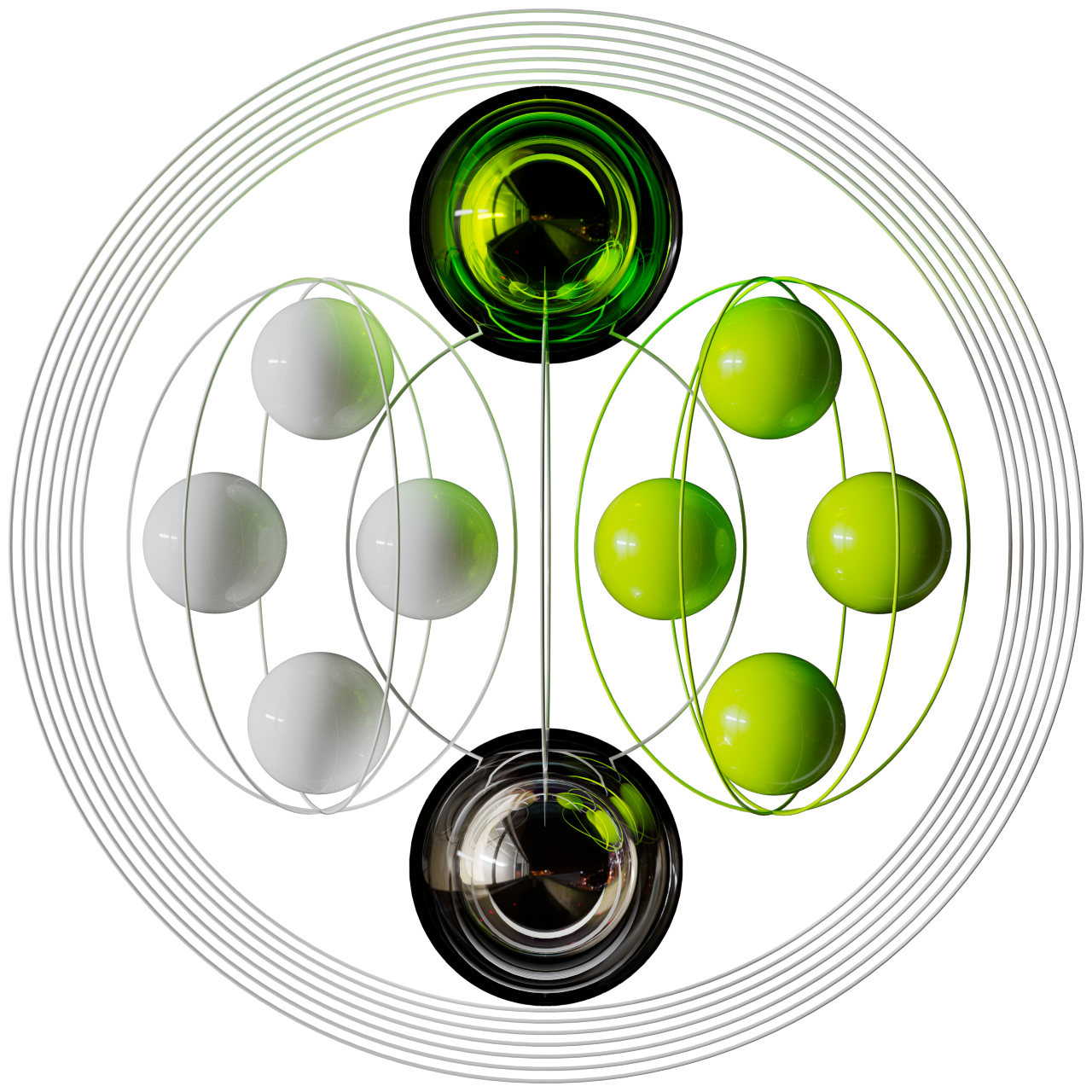The MGXS Cosmogony is the backbone of an environment where technology becomes a medium to explore subjectivity, abstraction, and the senses. It powers an evolving entity created by AI, machine learning, and generative computing that responds to user inputs. This dynamic interaction blurs the line between the creator and the machine, facilitating a collaborative artistic journey.
The MGXS Cosmogony also reflects the search to explore the elements that are part of the universe, objectively and subjectively. And so, it is the thread that weaves my creations, which become part of a living database where each fragment of art, symbol, sound, or visual structure is part of a complex network of interconnected meanings.
MGXS COSMOGONY:
HUMAN COSMOGONY vs MACHINE COSMOGONY
On the one hand, MGXS's Human Cosmogony revolves around an intellectual and artistic journey through origins and nature of human existence, while simultaneously reimagining the dynamics between humans and machines — leading to the creation of a new way of explaining our own cosmogony, or simply reinventing one.
On the other hand, MGXS's Machine Cosmogony looks into the canvas, travelling through dimensions, and reimagines the nature of creations and the very creatures on the other side. Artificial beings may reflect our nature, our human condition and our struggle for identity — all this while being part of and living in their very own cosmogony.
Care to come along and join me?
Today, Cosmogony is how I write the MGXS episodes in the new chapters of art history.
My artworks are a portal to the MGXS Universe and Cosmogony. There, we find an interactive experience where one can find thoughts, data, stories, history, artworks, content from diverse topics: from human insecurities to the Big Bang. Each piece is a platform for exploration of technology and humanity, of the relation humans-machines through art prompted by reflective questions.
The advent of machines, computers and the digital space added new dimensions to the understanding of the cosmos. New technologies allowed the exploration of the universe both objectively and subjectively: a human on the moon; a robot on Mars; a scan of the brain; the transcription and transmission of ethnographies; community radios held by indigenous peoples; the syncretism of stories and identities.
Along with these, the digital space has offered us must-seize opportunities to question the universe — in our case, through digital art. It offers us the possibility to co-create — with computers, fellow participants, members of our community — a cosmogony for what lies on the other side of the canvas/screen, reflecting or rejecting the existing narratives we find today.
Cosmogony can only be experienced by entering it.
The MGXS Cosmogony merges physical and digital, exploring the relationship between human and synthetic, real and imagined, chaos and structure. The various digital techniques used in my creative processes converge to create an immersive experience. My conceptual basis lies in the idea of a generative universe that transforms according to user inputs and the internal dynamics of its systems.
The result is the different experimental projects and series of artworks produced; the immersion of participants in a non-chronological but experiential journey; a new form of artistic expression that goes beyond what traditional art has achieved.
My artistic approach explores cosmogonic narratives as we critically dive into art and technology.
I believe art has been influenced by cosmogonies throughout history, and has helped us understand different cosmogonies as well. Ancient societies created artistic representations of their cosmogonic creation in the form of detailed mythologies, mixing religious and cosmological aspects.
Through the generative artworks in the series URUCU, for instance, I pay tribute to cosmogonies existing on the same territory, somewhat connected by a generation that saw the struggles of traditional peoples in Brazil in reclaiming their identity and rights while Japanese culture became popular through games and TV shows in the country that hosts the biggest Japanese community outside Japan. URUCU offers a platform to think about the underlying values in each of the cosmogonies, and to reflect on the worldviews rooted in the foundational myth of Brazilian identity.



